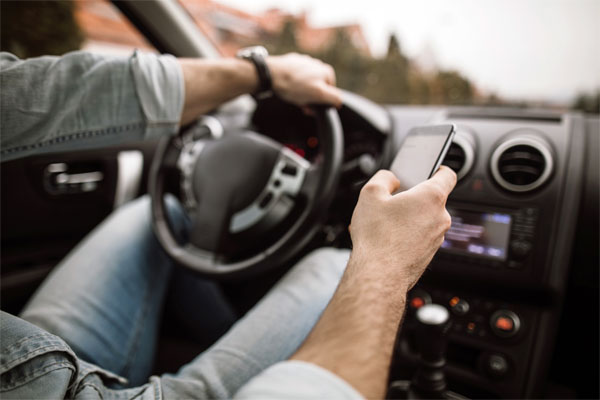02 Apr PAYING ATTENTION: Why You May Be Driving Blind
Imagine this: You pull up to a red light, grab your phone, unlock the screen, tap the text icon, and start typing: “be home in 10”. HONK! You look up to see a green light and speed off. Sound familiar? Our bet is it does…
“The National Highway Traffic Safety Administration estimates that at any point during the day, nine percent of drivers are using cell phones. More than two-thirds of respondents to a AAA Foundation for Traffic Safety survey reported talking on cell phones while driving during the previous 30 days. Nearly one in three admitted they engaged in this behavior fairly often or regularly.” (Source 1)
So, accident data is showing us that the problem of distracted driving is on the rise, and it’s no surprise that your cellphone is playing a large role in that increase.
Now that we’re in April, and it’s Distracted Driving Month, our team at Clark would like to address distracted driving and cellphone use, just like the example above. To do this, we’ll focus on an underlying concept: inattention blindness – to explain why distracted driving is occurring and to show you how it’s a solvable problem.
First, Let’s Define Inattention Blindness
Inattention blindness is the failure to notice a fully-visible, but unexpected object because attention was engaged on another task, event, or object.
 You can see how this describes the effects of checking your phone in the car. The effects, though, extend for a frightening amount of time. Studies have shown after an attention-consuming moment, like checking your phone, you will be a distracted driver for an additional 27 seconds, well after you put your phone down. If you’re on the highway going 60mph, you’ve driven half a mile in that time and not really seen what was happening (and that’s not to mention the time you were texting, on the phone, or adjusting your GPS)!
You can see how this describes the effects of checking your phone in the car. The effects, though, extend for a frightening amount of time. Studies have shown after an attention-consuming moment, like checking your phone, you will be a distracted driver for an additional 27 seconds, well after you put your phone down. If you’re on the highway going 60mph, you’ve driven half a mile in that time and not really seen what was happening (and that’s not to mention the time you were texting, on the phone, or adjusting your GPS)!
How is this possible? According to a National Safety Council study, “Brain researchers have identified reaction-time switching costs, which is a measurable time when the brain is switching its attention and focus from one task to another.” (Source 1) That amount of time is enough to render something otherwise obvious – completely invisible. Don’t believe us? See for yourself here.
Study after study has observed the phenomenon of inattention blindness, showing footage of people plowing through crosswalks and red lights because they were talking on cellphones while looking straight ahead. Hopefully, you now have a better understanding of why this is happening: they were looking but could not see what was happening in front of them. They were so busy imagining the person on the other end of the phone call, they didn’t actually take in the information of the unexpected event in front of them.
How to Avoid Distracted Driving
So how do you avoid falling into the trap of inattention blindness? It’s hard! We won’t pretend it isn’t – we live in a connected world, and just shutting that off takes intentional effort. Here are a few suggestions to help you get started:
Be aware of the problem:
Most people hear “don’t text and drive” and roll their eyes, or think just talking on the phone using Bluetooth solves the problem – it doesn’t. Understanding inattention blindness and its effects puts you ahead of the game. So nice job! You’re already one step ahead.
Tips to Prevent Distracted Driving
Try one of the following suggestions to see which one works best for you:
- There a lot of apps designed to block texts and calls while driving. Research which works best for you and try one! (this one is a little ironic but these apps do work!)
- If you need your phone for GPS navigation, mount it to the dashboard instead of holding it. Set the destination before leaving and keep your hands off of it while driving.
- Put your phone on silent and turn off the vibration when in the car.
- When in the car, keep your phone out of sight and out of reach. Try placing it in the pocket behind the driver’s seat.
- Parents: lead by example. Kids learn by watching – if you don’t want your kids to text and drive one day, don’t model that behavior.
So there you have it. In our next article, we will be addressing multi-tasking. Many of us like to brag that we are excellent at it, but did you know it’s actually a myth? Our brains love to tell us we can, but as we learned today, it’s just not that simple!
Learn more by contacting Tim McCarty, Director – Safety & Risk Consulting at Clark Insurance.




